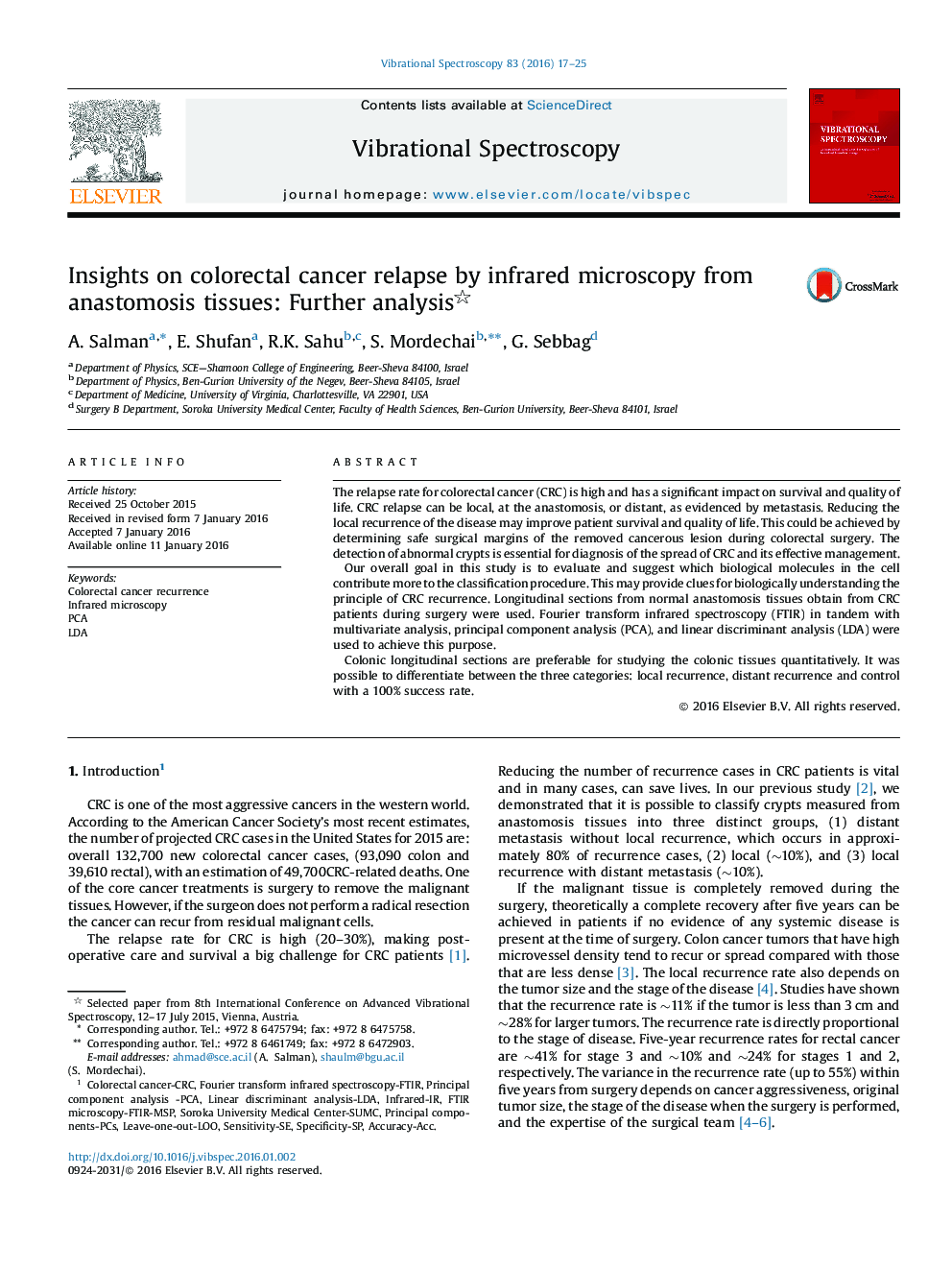| Article ID | Journal | Published Year | Pages | File Type |
|---|---|---|---|---|
| 1251700 | Vibrational Spectroscopy | 2016 | 9 Pages |
The relapse rate for colorectal cancer (CRC) is high and has a significant impact on survival and quality of life. CRC relapse can be local, at the anastomosis, or distant, as evidenced by metastasis. Reducing the local recurrence of the disease may improve patient survival and quality of life. This could be achieved by determining safe surgical margins of the removed cancerous lesion during colorectal surgery. The detection of abnormal crypts is essential for diagnosis of the spread of CRC and its effective management.Our overall goal in this study is to evaluate and suggest which biological molecules in the cell contribute more to the classification procedure. This may provide clues for biologically understanding the principle of CRC recurrence. Longitudinal sections from normal anastomosis tissues obtain from CRC patients during surgery were used. Fourier transform infrared spectroscopy (FTIR) in tandem with multivariate analysis, principal component analysis (PCA), and linear discriminant analysis (LDA) were used to achieve this purpose.Colonic longitudinal sections are preferable for studying the colonic tissues quantitatively. It was possible to differentiate between the three categories: local recurrence, distant recurrence and control with a 100% success rate.
